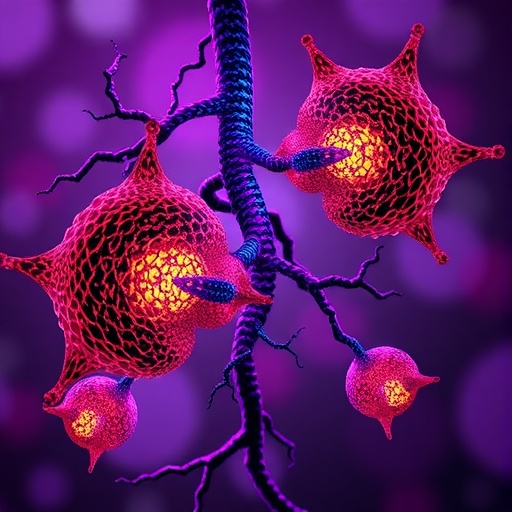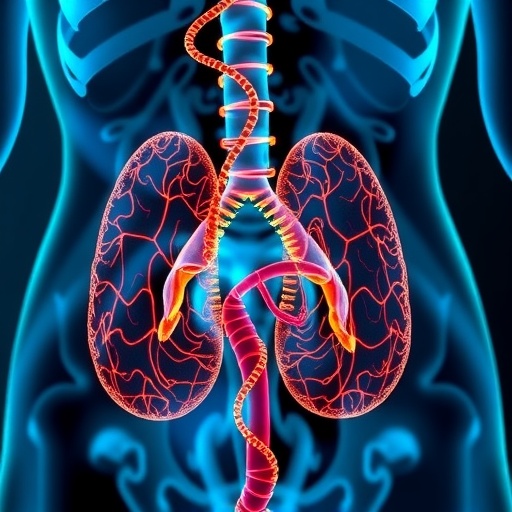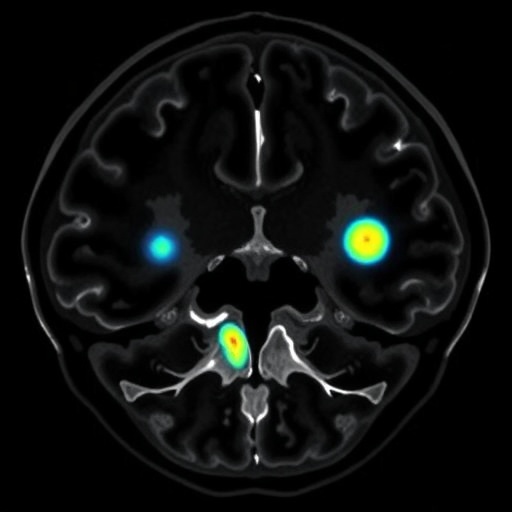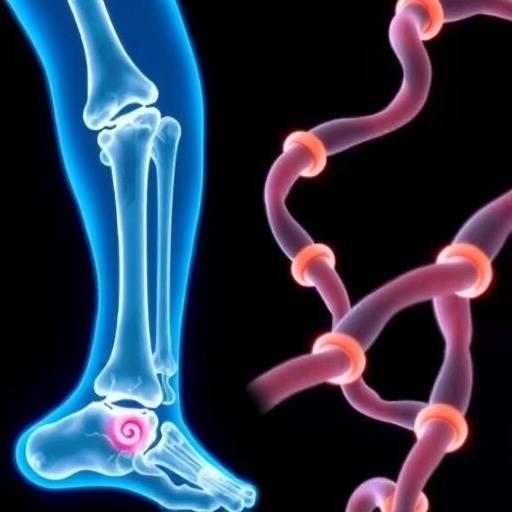Peptidyl-arginine deiminase 2 (PAD2) has emerged as a pivotal enzyme driving the progression of pancreatic ductal adenocarcinoma (PDAC), one of the deadliest forms of cancer due to its aggressive growth, metastatic potential, and resistance to conventional therapies. In groundbreaking research conducted by scientists at the Institute of Science Tokyo, Japan, PAD2’s enzymatic activity has been linked directly to modifications in chromatin structure and gene expression patterns that promote tumor proliferation and create a tumor-friendly microenvironment. This novel insight into the epigenetic regulation mechanisms underlying PDAC progression opens promising avenues for targeted anticancer strategies.
Histone proteins, critical components of chromatin architecture, are subject to a variety of post-translational modifications that regulate gene accessibility. Among these, histone citrullination—a process mediated by PAD enzymes—converts arginine residues into citrulline, altering the electrostatic landscape of chromatin. PAD2, a member of this enzyme family, facilitates this conversion and thereby modulates transcriptional programs crucial for cancer cell growth. Despite the recognized role of peptidyl-arginine deiminase enzymes in various malignancies, the specific contributions of PAD2 in PDAC have remained largely undefined until now.
The team led by Professor Shinji Tanaka employed advanced genetic manipulation techniques to create pancreatic cancer cell lines with modified PAD2 expression levels. By establishing PAD2-overexpressing and PAD2-knockdown cell models, their experiments demonstrated a direct correlation between PAD2 activity and cellular proliferation rates. Cells overexpressing PAD2 exhibited accelerated growth, whereas PAD2-deficient cells showed marked proliferation attenuation. These findings underscore the enzyme’s integral role in supporting the rapid expansion of PDAC tumor cells.
Beyond cellular proliferation, the researchers elucidated mechanisms by which PAD2 influences the tumor microenvironment. RNA sequencing analyses of PAD2-knockdown cells revealed a downregulation of multiple genes, with prune exopolyphosphatase 1 (PRUNE1) emerging as a key downstream target. PRUNE1 has been implicated in oncogenic processes, and its expression appears tightly regulated by PAD2-mediated histone citrullination. This epigenetic control axis orchestrates not only tumor growth but also the immune milieu.
In vivo tumorigenesis assays provided compelling evidence of PAD2’s oncogenic potential. Mice implanted with PAD2-overexpressing pancreatic cancer cells developed significantly larger tumors, enriched with heightened levels of histone citrullination marks. Notably, these tumors presented increased infiltration of M2-polarized macrophages, immune cells known to support tumor progression through immune suppression and tissue remodeling. The interplay between PAD2 activity and immune cell recruitment suggests a multifaceted role for the enzyme in sculpting a microenvironment conducive to cancer advancement.
Therapeutically, the study explored the efficacy of PAD inhibitors in mitigating PDAC growth. Treatment of PDAC cell lines with Cl-amidine, a pan-PAD inhibitor, as well as AFM-30a, a selective PAD2 inhibitor, effectively reduced PRUNE1 expression and hampered cell proliferation. Additionally, systemic administration of Cl-amidine in mouse models bearing PAD2-overexpressing tumors substantially inhibited tumor development, highlighting the translational potential of PAD2-targeted therapies.
The association of histone citrullination with poor patient prognosis was further corroborated through immunohistochemical analyses of human pancreatic tissue samples. PDAC specimens exhibited elevated histone citrullination levels compared to normal pancreas tissue, correlating with reduced overall survival. These clinical observations reinforce the significance of PAD2-mediated epigenetic modifications as biomarkers and therapeutic targets.
This body of work advances the understanding of the epigenetic underpinnings of pancreatic cancer aggressiveness. By delineating a PAD2-PRUNE1 regulatory axis and revealing PAD2’s role in modulating both tumor cell proliferation and immune landscape, the findings cast new light on the complexity of PDAC biology. Epigenetic targeting of PAD2 enzymatic activity could therefore represent a paradigm shift in pancreatic cancer treatment, offering hope in a disease notorious for its therapeutic resistance.
Importantly, the study leverages both in vitro cell cultures and in vivo mouse models to validate the biological relevance of PAD2 in pancreatic tumorigenesis comprehensively. The integration of genetic, transcriptomic, and immunological approaches exemplifies a sophisticated experimental framework capable of unraveling intricate molecular interactions within the tumor microenvironment.
Given the dismal survival rates currently associated with PDAC, innovations in therapy are urgently required. This research suggests that pharmacological modulation of histone citrullination through PAD2 inhibition may improve patient outcomes by targeting fundamental epigenetic processes driving malignancy. Future clinical investigations will be essential to assess the safety and efficacy of PAD inhibitors as part of combination regimens in pancreatic cancer treatment.
In summary, the Institute of Science Tokyo’s study highlights PAD2 as a master regulator in PDAC progression. Its catalytic activity induces histone modifications that activate oncogenic gene expression, while simultaneously remodeling the immune contexture to favor tumor growth. This dual impact positions PAD2 as a compelling biomolecular target. As efforts to translate these findings into therapeutic applications advance, a new chapter in the battle against pancreatic cancer may be unfolding.
Subject of Research: Animals
Article Title: PAD2-Mediated Histone Citrullination Drives Tumor Progression by Enhancing Cell Proliferation and Modifying the Microenvironment in Pancreatic Cancer
News Publication Date: 26-Jun-2025
Web References: https://doi.org/10.1158/1541-7786.MCR-24-1095
Image Credits: Institute of Science Tokyo
Keywords: Pancreatic cancer, Cancer, Diseases and disorders, Health and medicine, Biomedical engineering, Human health, Medical specialties
Tags: aggressive cancer growth mechanismschromatin structure alterationsepigenetic regulation in cancerhistone modifications and gene expressionPAD2 enzyme functionsPAD2-mediated histone citrullinationpancreatic cancer cell line researchpancreatic ductal adenocarcinoma progressionpost-translational modifications in cancerresistance to conventional cancer therapiestargeted anticancer strategiestumor microenvironment modifications






